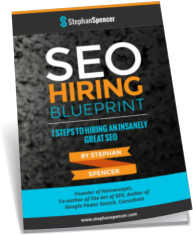If you think that Open Source is about it being “free” in the sense of not paying for it, you’re missing the point. It’s about being “free” in the sense of freedom of speech and freedom to create and re-mix intellectual property, unfettered.
Information wants to be free, after all.
But it’s more than that. According to John Perry Barlow in his classic Wired article from 1994, The Economy of Ideas:
- Information Is a Verb, Not a Noun – Information is something that happens when minds or objects or other pieces of information interact.
- Information Is Experienced, Not Possessed – It’s something that happens to you as you mentally decompress it from its storage code.
- Information Has to Move – If it isn’t moving it ceases to exist as anything but potential.
- Information Is Conveyed by Propagation, Not Distribution – It cannot be shipped around like widgets, because it doesn’t simply move on; it leaves a trail everywhere it’s been.
- Information Wants to Be Free – Information by its very nature desires to escape outside its imposed boundaries.
- Information Replicates into the Cracks of Possibility – The more universally resonant an idea or image or song, the more minds it will enter and remain within.
- Information Wants to Change – It evolves constantly into forms which will be more perfectly adapted to its surroundings.
- Information Is Perishable – Generally, its quality degrades rapidly both over time and in distance from the source of production.
- Meaning Has Value and Is Unique to Each Case – We assign value to information based on its meaningfulness. That value depends on the extent to which each recipient has the receptors (shared terminology, attention, interest, language, paradigm) necessary to render what is received meaningful.
- Familiarity Has More Value than Scarcity – Most soft goods increase in value as they become more common. Often times the best way to raise demand for your product is to give it away.
- Exclusivity Has Value – Exclusive possession of certain facts makes them more useful, but that value often degrades over time.
- Point of View and Authority Have Value – People are willing to pay for the authority of those editors whose point of view seems to fit best.
- Time Replaces Space – Information is generally more valuable the closer the purchaser can place themselves to the moment of its expression.
- The Protection of Execution – The best way to protect intellectual property is to act on it, not to sit on it.
- Information as Its Own Reward – Information is its own currency. It has intrinsic value, not as a means to acquisition but as the object to be acquired.
If you read Stanford law professor Larry Lessig’s book Free Culture: How Big Media Uses Technology and the Law to Lock Down Culture and Control Creativity, which is freely available for download and is “Creative Commons” licensed, you’ll understand that this is a war and how high the stakes really are: humanity’s creativity will either be stifled or unleashed, depending on the outcome. Or if you don’t have the time to read a book, (even one that won’t cost you anything), do at least listen to Larry’s Free Culture webcast.
I’ve blogged before about the benefits to businesses of “embracing and extending” what’s already out there. Why reinvent the wheel countless times over?
We “stand on the shoulders of giants” because of the free exchange of ideas.
If this is too idealistic for you, then from a practical standpoint, Open Source ensures you won’t be “held hostage” by your web developer withholding web site source code as proprietary information — a common practice (but not here at Netconcepts!). Having the complete source code of your site, mitigates possible legal and operational code access problems and gives you maximum flexibility for future modification. I think one should continue to work with their web vendor because they are delighted with the service and quality of work, not because a transition would be too costly and would require rebuilding the site from scratch.
In addition, an Open Source solution is not constrained by licensing agreements, as proprietary software is. Open Source also offers security benefits because it’s open to public scrutiny and subject to constant user testing. And of course there’s also the reliability, adaptability and ease of maintenance of Open Source solutions.
More free-to-download books on the subject of Open Source: Open Sources: Voices from the Open Source Revolution, Open Sources 2: The Continuing Evolution, and Producing Open Source Software: How to Run a Successful Free Software Project.
Vive la resistance!

 SIGN UP FOR EXCLUSIVE WEEKLY CONTENT
SIGN UP FOR EXCLUSIVE WEEKLY CONTENT 


Hi Simon!
Good questions. I haven’t read these books, so I’m not sure how in-depth they go on the business side. As far as how to bring both together, here are a few ideas:
– Release article summaries under Creative Commons, but keep the full version of the articles under copyright and charge for them.
– Compile an ebook on a topic of interest using Creative Commons licensed material. Mix in some of your own material too and put the entire work under Creative Commons. The people who read your ebook may want more material from you.
– Create supplementary materials of your core works and release those supplementary materials under Creative Commons. For example: a Q&A session discussing your article made into an audio recording or a webinar or a screencast.
Stephan